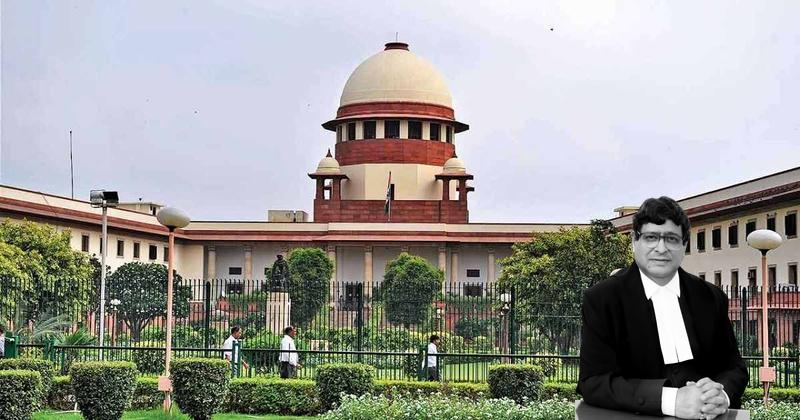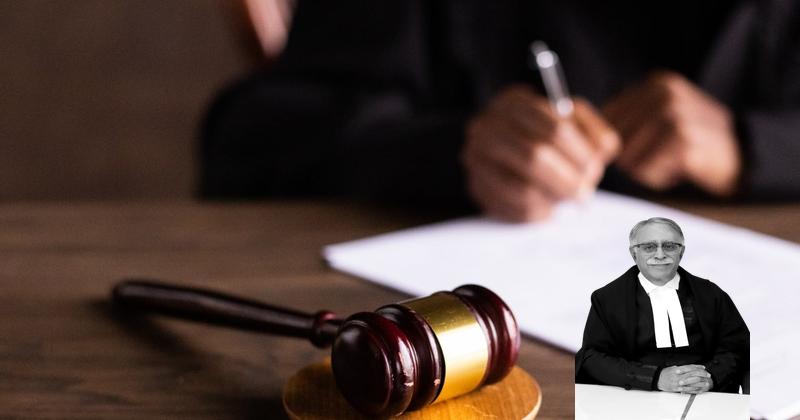It is further case of prosecution that deceased stopped seeing the appellant and broke her relationship with the appellant and deceased was talking to her neighbour one Mr. PW-1 and PW-2 had admitted the deceased to the hospital and after three days the complaint was lodged resulting in registration of FIR No.1659 of 2010 for the offence punishable under Sections 294(b), 448, 323 and 506(1) of the Indian Penal Code (hereinafter referred to as “IPC”) and Section 4 of the Tamil Nadu Prohibition of Harassment of Women Act against the appellant.
The accused was sentenced to undergo rigorous imprisonment for five years and to pay a fine of Rs.50,000/- and in default to undergo simple imprisonment for six months for the offence under Section 450 and sentenced him and to undergo imprisonment for life and to pay a fine of Rs.60,000/- and in default to undergo simple imprisonment for six months for the offence under Section 302 IPC.
It was also opined by the High Court that deceased had given up her love for the accused and she had developed relationship with one Mr. Sudhakar which enraged the accused to wreak vengeance and for this reason he had gone all the way to the house of the deceased with a determination to eliminate her and as such it would fall within the first limb of Section 300 IPC and thus, he was liable to be punished under Section 302 IPC.
He would also draw the attention of the Court that theory of the prosecution as put forth in the complaint lodged by PW-1 is that the 7 accused had punched her daughter on the face and she fell on the kitchen slab. He would also 8 contend that the evidence tendered by the prosecution has not been impeached and the prosecution witnesses have stood the test of cross- examination and as such the impugned order deserves to be affirmed. Hence, within this limited sphere this appeal has to be examined, namely, as to whether 9 judgement, order and sentence passed by the Sessions Court and affirmed by the High Court requires to be affirmed or the sentence is to be converted and punishment to be awarded under Section 304 of IPC and if so, which part of Section 304 IPC? PW-10 who is the doctor at Cauvery Hospital, Trichy and had examined the deceased, has deposed that deceased was conscious when he examined her on 26.06.2010. In the teeth of aforesaid medical evidence available on record, the testimony of eye-witness, namely, mother of the deceased-PW-1 requires to be examined.
The testimony 11 of the uncle of the deceased – PW-2 which is on record would disclose that he was returning from work at 10:45 pm on 19.06.2010 and he saw the accused coming out of his mother in law’s house and heard her cry and as such he rushed to her house and saw the deceased lying in a fainted condition.
On removal of the sutures, edges are irregular, 2 cm in breadth and bone deep, on the left parietal region of the scalp, 2 cm in length.
Also Read: https://newslaw.in/supreme-court/consolidation-of-firs-in-multi-state-fraud-case/
State of Pepsu AIR 1956 SC 488 at page 490 the following observations have been made: “Of course, we have to distinguish between motive, intention and knowledge. It requires to be borne in mind that the test suggested in the aforesaid decision and the fact that the legislature has used two different terminologies, ‘intent’ and ‘knowledge’ and separate punishments are provided for an act committed with an intent to cause bodily injury which is likely to cause death and for an act committed with a knowledge that his act is likely to cause death without intent to cause such bodily injury as is likely to cause death, it would be 14 unsafe to treat ‘intent’ and ‘knowledge’ in equal terms.
Where the evidence would not disclose that there was any intention to cause death of the deceased but it was clear that the accused had knowledge that his acts were likely to cause death, the accused can be held guilty under second part of Section 304 IPC. At the other end of the spectrum, there may be cases of murder where the accused attempts to avoid the penalty for murder by attempting to put forth a case that there was no intention to cause death. The intention to cause death can be 16 gathered generally from a combination of a few or several of the following, among other, circumstances: (i) nature of the weapon used; (ii) whether the weapon was carried by the accused or was picked up from the spot; (iii) whether the blow is aimed at a vital part of the body; (iv) the amount of force employed in causing injury; (v) whether the act was in the course of sudden quarrel or sudden fight or free for all fight; (vi) whether the incident occurs by chance or whether there was any premeditation; (vii) whether there was any prior enmity or whether the deceased was a stranger; (viii) whether there was any grave provocation, and if so, the cause for such provocation; (ix) whether it was in the heat of passion; (x) whether the person inflicting the injury has taken undue advantage or has acted in a cruel and unusual manner; (xi) whether the accused dealt a single blow or several blows. Taking into consideration that the appellants therein were young boys and had served sentence of more than three years and five months and there was no previous enmity, persuaded this Court that the quantum of sentence is excessive and accordingly sentenced them to the period already undergone for the offence under Section 304 Part-II/ Section 34 IPC by observing thus: “27. On some comments made to the girls sitting in 18 front of the deceased, some altercation took place and they entered into a scuffle and without any pre meditation, the alleged unfortunate incident took place between two group of young boys and it is informed to this Court that the appellant has served the sentence of more than three years and five months. State of Uttar Pradesh reported in (2018) 8 SCC 228 it came to be noticed by this Court that incident had taken place in the heat of the moment and the assault was by a single sword blow in the rib cage was without any premeditation and incident had occurred at the spur of the moment, and thus inferred there was no intention to kill and as such the offence was converted from Section 302 IPC to Section 304 Part II IPC and the appellant was ordered to be released forthwith by sentencing them to the period of conviction already undergone. Had there been any intention to do away with the life of the deceased, nothing prevented the appellant from making a second assault to ensure his death, rather than to have run away. But in the nature of weapon used, the as- sault made in the rib-cage area, knowledge that death was likely to ensue will have to be attributed to the appellant. Few important principles of law discernible from the aforesaid discussion may be summed up thus: (1) When the court is confronted with the question, what offence the accused could be said to have committed, the true test is to find out the intention or knowledge of the accused in doing the act. There may be no difficulty in holding that ‘B’ intentionally inflicted the particular injury found to be caused and that the said injury was objectively sufficient in the ordinary course of nature to cause death.
In the event of the case falling within any of those exceptions, the offence would be culpable homicide not amounting to murder, falling within Part 1 of Section 304 of the IPC, if the case of the accused is such as to fall within Clauses (1) to (3) of Section 300 of the IPC. It would be an offence under Part I of that section, if the case fall within 2nd part of Section 299, while it would be an offence under Part II of Section 304 if the case fall within 3rd part of Section 299 of the IPC. To put it more succinctly, the difference between the two parts of Section 304 of the IPC is that under the first part, the crime of murder is first established and the accused is then given the benefit of one of the exceptions to Section 300 of the IPC, while under the second part, the crime of murder is never established at all.
(7) The distinction between culpable homicide (Section 299 of the IPC) and murder (Section 300 of the IPC) has always to be carefully borne in mind while dealing with a charge under Section 302 of the IPC. But, even though none of the said five exceptions are pleaded or prima facie established on the evidence on record, the prosecution must still be required under the law to bring the case under any of the four clauses of Section 300 of the IPC to sustain the charge of murder.
The intention to cause injury or injuries sufficient in the ordinary cause of nature to cause death also makes a culpable homicide a murder if death has actually been caused and intention to cause such injury or injuries is to be inferred from the act or acts resulting in the injury or injuries. 25 (12)
In determining the question, whether an accused had guilty intention or guilty knowledge in a case where only a single injury is inflicted by him and that injury is sufficient in the ordinary course of nature to cause death, the fact that the act is done without premeditation in a sudden fight or quarrel, or that the circumstances justify that the injury was accidental or unintentional, or that he only intended a simple injury, would lead to the inference of guilty knowledge, and the offence would be one under Section 304 Part II of the IPC.” 20.
Case Title: N. RAMKUMAR Vs. THE STATE REP. BY INSPECTOR OF POLICE
Case Number: Crl.A. No.-002006-002006 / 2023



